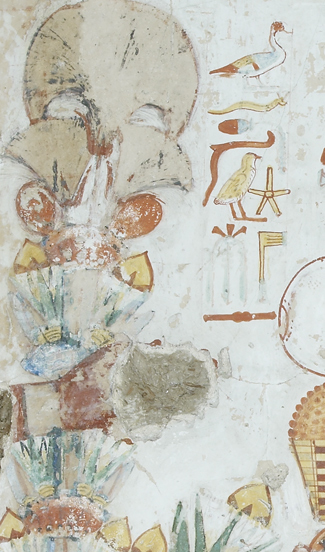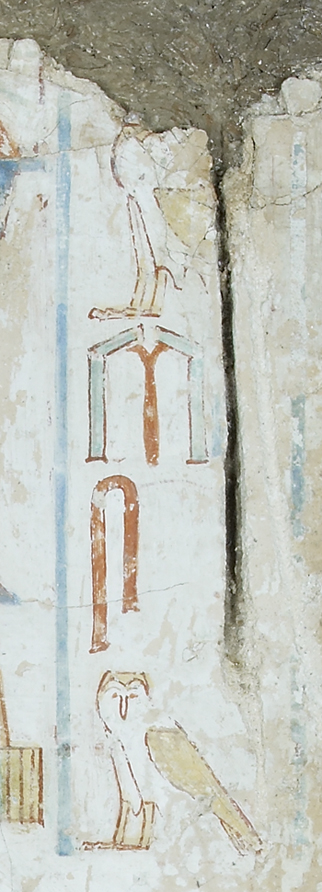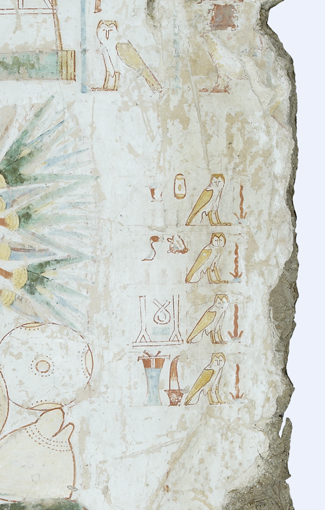1.1 Exploration
The vertical pile of wine amphorae, foodstuffs and perfumes is another representational convention. In reality objects would not be placed on top of each other, but laid out side by side on the woven mats represented by the greenish horizontal bars.
In all there are around thirty separate items: the four wine amphorae, the three perfume containers, about twenty pieces of bread, meat and fruit, plus several bunches of flowers and the garland of vine leaves.
What we have left out of this account, detailed though it is, are three further things which would, however, have been crucial to the meaning of the picture in the original scheme.
Figure 2 is an image from the extreme left of the fragment shows a hand, and below it, part of another large bunch of flowers whose blooms point to the right (as do those of the large bunch surmounting the pile of food).
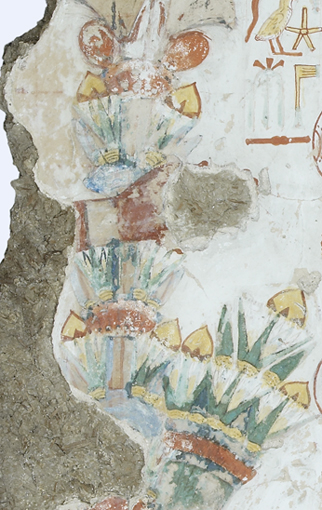
Figure 3, from the bottom right of the fragment, shows a human foot. Note that the foot appears to be shown on a larger scale than the objects you have been looking at.
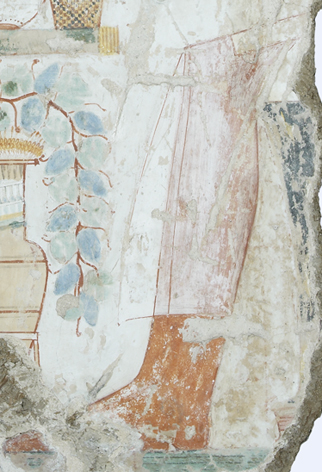
Key point
In Egyptian painting the size of figures is not determined ‘naturalistically’ (in fact, despite the naturalism of their details, the pictures do not show ‘realistic’ scenes at all) but the figures’ size indicates their importance in the scheme of meanings which the picture articulates. Being seated on a chair is another indicator of status.
There are also some hieroglyphic texts on the fragment that can give us clues to the meaning (Figure 4). One is at the left adjacent to the hand. The second descends from the top right edge. The third is further down to the right hand edge, adjacent to the pile of foodstuffs.
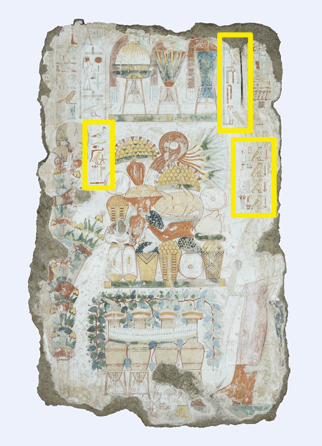
Link to detail
